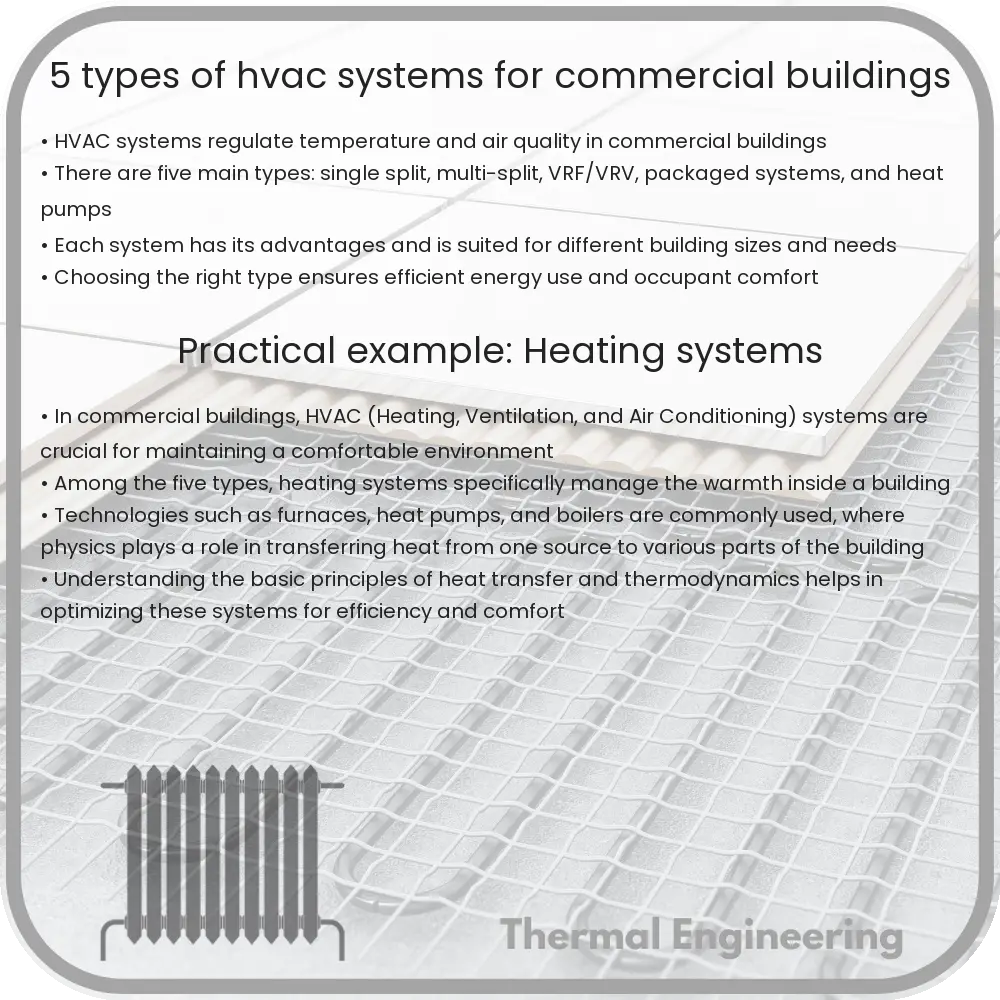Learn about the different types of HVAC systems for commercial buildings, tailored to various needs and sizes.

Understanding the Types of HVAC Systems for Commercial Buildings
Heating, Ventilation, and Air Conditioning (HVAC) systems are crucial for maintaining a comfortable and safe environment in commercial buildings. They regulate indoor climate and ensure proper air quality, making them essential for spaces like offices, shopping centers, and other public and private facilities. There are several types of HVAC systems used in commercial settings, each with unique characteristics tailored to different needs and building sizes. Here’s a look at five common types:
1. Single Split Systems
Single split systems are among the most popular HVAC choices for smaller commercial buildings, such as small offices, shops, and cafes. These systems are affordable and easy to install. Each system serves a single room, which means you can manage the heating and cooling in individual spaces separately. This not only helps in controlling the environment according to each room’s specific requirements but also reduces energy wastage. A major advantage of single split systems is that even if one unit fails, the rest remain operational.
2. Multi Split Systems
Multi split systems work similarly to single split systems but can connect multiple indoor units to a single outdoor unit. This setup helps save on outdoor space and is beneficial for buildings with limited exterior areas that cannot accommodate multiple outdoor units. It uses inverter technology that allows compressors to adjust their speed based on the demand, which significantly improves energy efficiency. Multi split systems are suitable for medium-sized buildings with several rooms, such as larger offices or medical practices.
3. Variable Refrigerant Flow (VRF) or Variable Refrigerant Volume (VRV) Systems
Developed in Japan in the 1980s, VRF/VRV systems are targeted at buildings that need high levels of efficiency and the ability to control the environmental conditions in different parts of the building independently. These systems can provide both heating and cooling simultaneously to different areas, making them ideal for larger, multi-story buildings with varying temperature requirements across zones. They operate quietly and offer one of the best energy efficiencies on the market.
4. HVAC Chillers
Chiller systems provide cooling for buildings and industrial facilities. They remove heat from the indoor air through the use of chilled water, which circulates through a loop system. There are two types of chillers: air-cooled and water-cooled. Air-cooled chillers are usually installed outside and expel the heat absorbed from the indoor air directly into the outdoor air, while water-cooled chillers rely on a cooling tower to dispose of the absorbed heat. Chillers are particularly effective for high-rise buildings or large commercial spaces with significant cooling demands.
5. Rooftop Units
Rooftop units (RTUs) are large air-conditioning systems installed on the roof of buildings. They are common in commercial environments, notably in single-story buildings like warehouses or retail stores. RTUs are all-in-one systems that house all components — compressor, condenser, evaporator, and air handling unit — in a single cabinet. They can be customized with additional features like economizers, which use outside air to cool the building when the outside temperature is cooler than the indoor temperature, thus enhancing the system’s efficiency.
Choosing the right HVAC system for a commercial building depends on a variety of factors including the size of the building, the local climate, energy efficiency requirements, and budget constraints. Understanding the different types of systems available can help in making an informed decision that ensures comfort, efficiency, and cost-effectiveness.